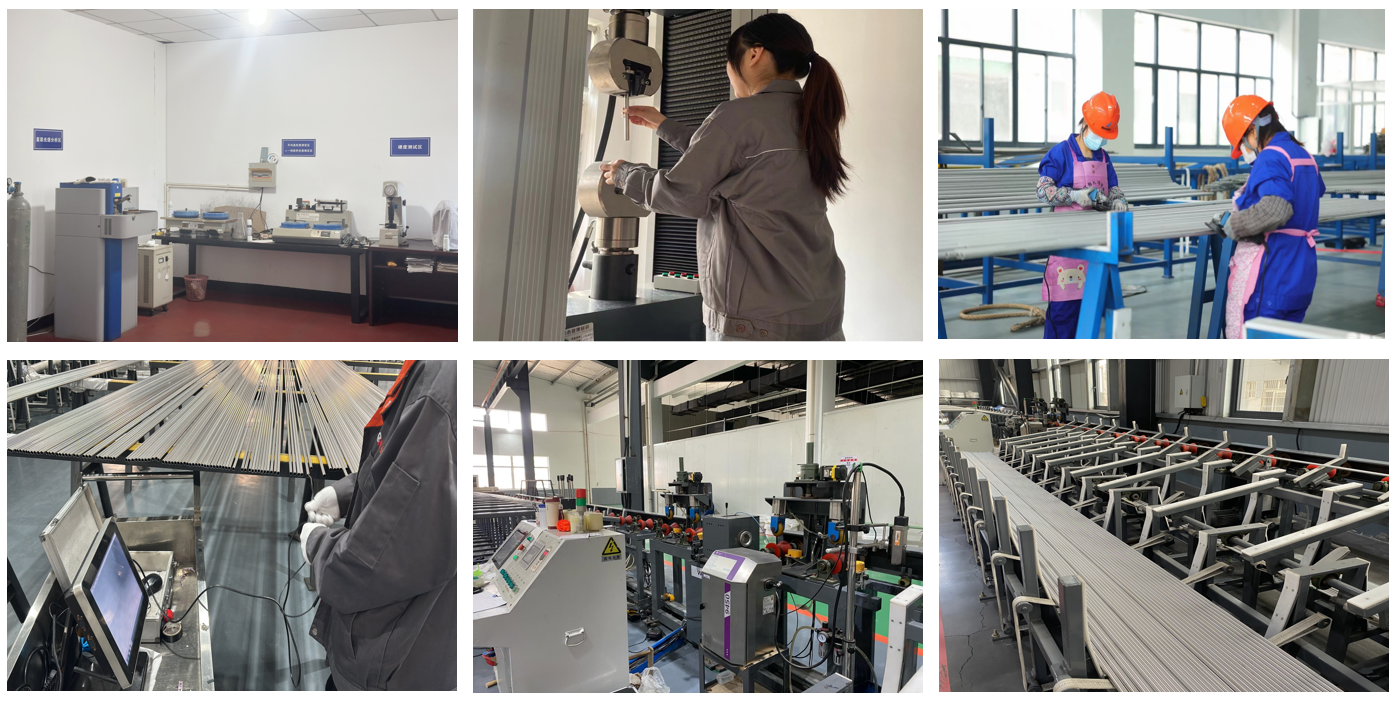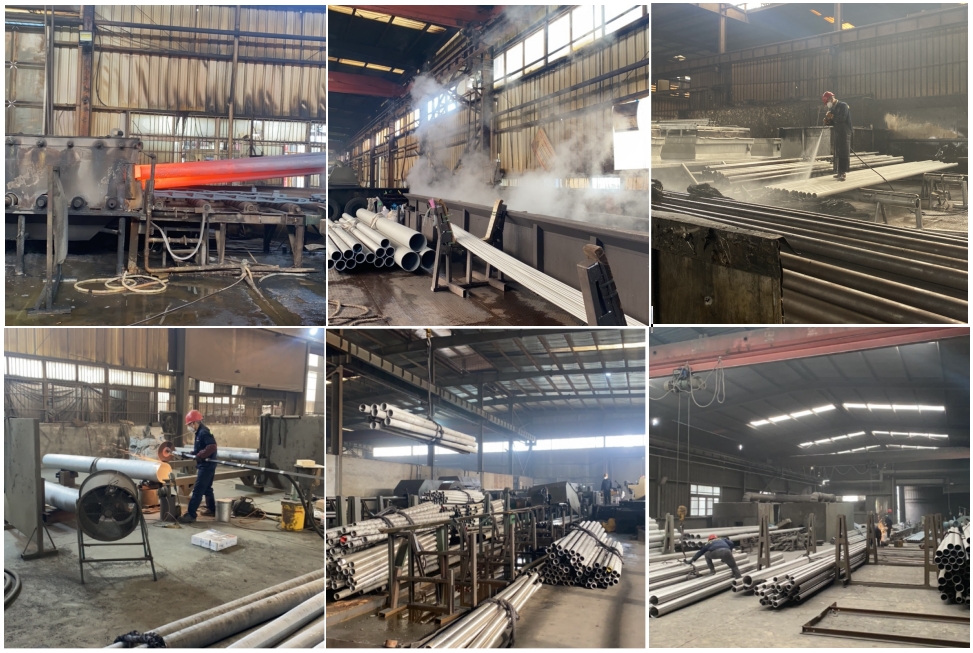| Availability: | |
|---|---|
| Quantity: | |
Excellent weldability: This is one of 304L's greatest strengths. Its low carbon content makes it less suscExcellent Corrosion Resistance:
It offers good corrosion resistance in most atmospheric environments and a wide range of chemical media.
It is particularly superior to standard 304 stainless steel in its excellent resistance to intergranular corrosion, especially after welding or heat treatment. This makes it well-suited for welded components.
It offers good resistance to oxidizing acids (such as nitric acid).
It also offers good resistance to organic acids, food-grade media, and water (including fresh water, steam, and condensate).
Limitations: It is susceptible to pitting and crevice corrosion in chloride-containing environments (such as seawater, de-icing salts, and certain industrial media), and its resistance to stress corrosion cracking is relatively weak. Its corrosion rate is higher in strongly reducing acids (such as sulfuric and hydrochloric acids).
Excellent Machinability and Fabrication:eptible to sensitization during and after welding, and post-weld annealing is generally not required to achieve good corrosion resistance. It can be welded using all standard methods (TIG, MIG, and metal arc welding).
Good Formability: Easy to cold form (bending, stamping, deep drawing, etc.).
Machinability: Austenitic stainless steels generally have a tendency to work harden, resulting in average machinability. This can be improved with the use of appropriate tools and cutting fluids.
304L is a general-purpose, low-carbon, austenitic stainless steel. Its most prominent advantages are excellent weldability and good resistance to intergranular corrosion even after welding, while retaining the inherent good corrosion resistance, formability, and toughness of austenitic stainless steels. Although its strength is slightly lower than standard 304 and its corrosion resistance in chloride-containing environments is limited, its excellent overall performance and relative cost-effectiveness make it a preferred material for a wide range of applications, including welded components, chemical containers, food processing equipment, and building structures. When designs involve welding and require corrosion resistance, 304L is generally a more reliable choice than standard 304.
The chemical composition
C | Si | Mn | S | Ni | Cu | P |
≤0.35 | ≤1.00 | ≤2.00 | ≤0.03 | 8.0-13.0 | 18.0-20.0 | ≤0.045 |
Mechanical properties
tensile strength( Mpa) | 0.2% yield strength ( Mpa) | Elongation A5(%) |
≥485 | ≥170 | ≥35 |
Density: 7.93g/cm3

Excellent weldability: This is one of 304L's greatest strengths. Its low carbon content makes it less suscExcellent Corrosion Resistance:
It offers good corrosion resistance in most atmospheric environments and a wide range of chemical media.
It is particularly superior to standard 304 stainless steel in its excellent resistance to intergranular corrosion, especially after welding or heat treatment. This makes it well-suited for welded components.
It offers good resistance to oxidizing acids (such as nitric acid).
It also offers good resistance to organic acids, food-grade media, and water (including fresh water, steam, and condensate).
Limitations: It is susceptible to pitting and crevice corrosion in chloride-containing environments (such as seawater, de-icing salts, and certain industrial media), and its resistance to stress corrosion cracking is relatively weak. Its corrosion rate is higher in strongly reducing acids (such as sulfuric and hydrochloric acids).
Excellent Machinability and Fabrication:eptible to sensitization during and after welding, and post-weld annealing is generally not required to achieve good corrosion resistance. It can be welded using all standard methods (TIG, MIG, and metal arc welding).
Good Formability: Easy to cold form (bending, stamping, deep drawing, etc.).
Machinability: Austenitic stainless steels generally have a tendency to work harden, resulting in average machinability. This can be improved with the use of appropriate tools and cutting fluids.
304L is a general-purpose, low-carbon, austenitic stainless steel. Its most prominent advantages are excellent weldability and good resistance to intergranular corrosion even after welding, while retaining the inherent good corrosion resistance, formability, and toughness of austenitic stainless steels. Although its strength is slightly lower than standard 304 and its corrosion resistance in chloride-containing environments is limited, its excellent overall performance and relative cost-effectiveness make it a preferred material for a wide range of applications, including welded components, chemical containers, food processing equipment, and building structures. When designs involve welding and require corrosion resistance, 304L is generally a more reliable choice than standard 304.
The chemical composition
C | Si | Mn | S | Ni | Cu | P |
≤0.35 | ≤1.00 | ≤2.00 | ≤0.03 | 8.0-13.0 | 18.0-20.0 | ≤0.045 |
Mechanical properties
tensile strength( Mpa) | 0.2% yield strength ( Mpa) | Elongation A5(%) |
≥485 | ≥170 | ≥35 |
Density: 7.93g/cm3






Company has 40 senior technicians, and meanwhile get the Quality Management Certification of ISO9001-2015 & PED 2014/68/EU and other related important certifications in industries. Such as DNV/ABS/TUV/Environment Management ISO 14001:2015/OHSMS Certification/Production License of Special Equipment P.R.C./US ASME Quality system certification and other Technology & Innovative Achievement Rewards.

Company has 40 senior technicians, and meanwhile get the Quality Management Certification of ISO9001-2015 & PED 2014/68/EU and other related important certifications in industries. Such as DNV/ABS/TUV/Environment Management ISO 14001:2015/OHSMS Certification/Production License of Special Equipment P.R.C./US ASME Quality system certification and other Technology & Innovative Achievement Rewards.